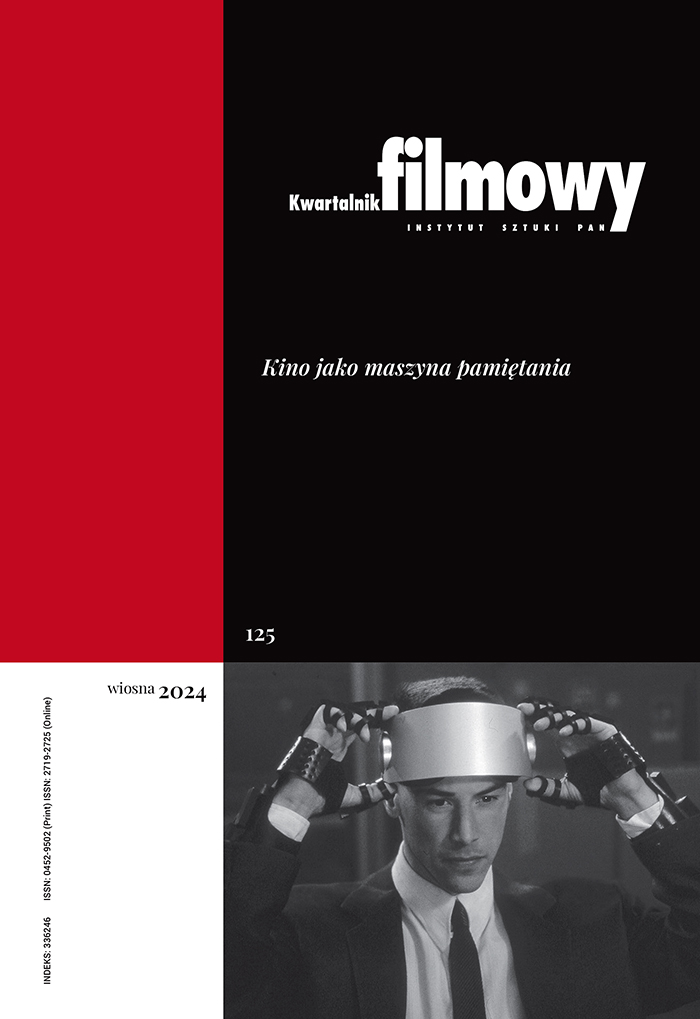In Elizabeth’s Shadow: Maria Stuart in Film
Abstract
Maria Stuart, the queen of Scotland, was beheaded by order of Elizabeth I. She is one of the most tragic figures in the history of Europe. Throughout her life she remained in the shadow of her cousin, with whom she was connected not only through ties of blood, but also complex political relations. The fact that she was the great grand-daughter of Henry VII, made her the rightful heiress to the throne of England and a threat to Elizabeth I. In his article, Kazana shows how Maria Stuart was presented in film through the years and in a number of countries. He begins with a one minute sequence of the beheading of the queen (1895), then he considers Carl Froelich’s The Queen’s Heart (1940) made as part of the fascist propaganda, and finally he moves onto the most important representatives dealing with this topic: Charles Jarrott’s Mary, Queen of Scots (1971) and a two part BBC drama by Gillies MacKinnon - Gun-powder, Treason and Plot (2004). Kazana places his analysis both within the historical context in which the films were made, and within the context of film studies. He also considers how the role of maria Stuart was interpreted by actresses such as Katherine Hepburn, Vanessa Redgrave or Clemence Poesy.
Keywords:
Maria Stuart, Elizabeth I, Carl Froelich, Charles Jarrott, Gillies MacKinnonReferences
Chapman James, Film historyczny – kino narodowe, „Kwartalnik Filmowy” 2005, nr 52, s. 30-31.
Google Scholar
Connery Sean, Murray Grigor, Being a Scot, Weidenfeld & Nicolson, London 2008, s. 214, 221.
Google Scholar
Delumeau Jean, Odrodzenie jako reforma Kościoła, w: tenże, Cywilizacja Odrodzenia, tłum. E. Bąkowska, PIW, Warszawa 1987, s. 120-121.
Google Scholar
Ebert Roger, Mary, Queen of Scots, http://rogerebert.suntimes.com/apps/pbcs.dll/article?AID=/19720307/REVIEWS/203070301/1023 [dostęp: 8.03.2009].
Google Scholar
Low Rachel, Roger Manvell, The History of British Film, Volume 1: 1896-1906, George Allen & Unwin, Londyn 1948, s. 118-119.
Google Scholar
Mackendrick Hilary, The Lost Queen, http://www.guardian.co.uk/film/2004/jun/04/3 [dostęp: 8.03.2009].
Google Scholar
Plesnar Łukasz A., Świat westernów Johna Forda, w: Mistrzowie kina amerykańskiego – Klasycy, red. Ł. A. Plesnar, R. Syska, Rabid, Kraków 2006, s. 116.
Google Scholar
Sklar Robert, Film. An International History of the Medium, Harry N. Abrams, Inc., New York 1993, s. 210-211.
Google Scholar
Trevelyan George Macaulay, Historia Anglii, tłum. A. Dębnicki, PWN, Warszawa 1967, s. 369-370.
Google Scholar
Zweig Stefan, Maria Stuart, tłum. M. Wisłowska, PIW, Warszawa 1959, s. 5, 269.
Google Scholar
Authors
Bartosz Kazanakwartalnik.filmowy@ispan.pl
Jagiellonian University Poland
Doktorant w Instytucie Sztuk Audiowizualnych na UJ. W kręgu zainteresowań autora znajdują się zagadnienia z zakresu historii kina, ze szczególnym uwzględnieniem kinematografii anglosaskich. Publikował m.in. w „Kulturze Popularnej”, „Kwartalniku Filmowym” oraz portalu popularnonaukowym „artPapier”. Współredaktor nowego „Filmu na Świecie".
Statistics
Abstract views: 202PDF downloads: 146
License
Copyright (c) 2010 Bartosz Kazana

This work is licensed under a Creative Commons Attribution 4.0 International License.
The author grants the publisher a royalty-free non-exclusive licence (CC BY 4.0) to use the article in Kwartalnik Filmowy, retains full copyright, and agrees to identify the work as first having been published in Kwartalnik Filmowy should it be published or used again (download licence agreement). The journal is published under the CC BY 4.0 licence. By submitting an article, the author agrees to make it available under this licence.
In issues from 105-106 (2019) to 119 (2022) all articles were published under the CC BY-NC-ND 4.0 licence. During this period the authors granted a royalty-free non-exclusive licence (CC BY-ND 4.0) to use their article in „Kwartalnik Filmowy”, retained full copyright, and agreed to identify the work as first having been published in our journal should it be published or used again.
Most read articles by the same author(s)
- Bartosz Kazana, Heirs of the Avant-Garde: Geoffrey Jones , Kwartalnik Filmowy: No. 70 (2010): Avant-Garde and Film
- Bartosz Kazana, The Black Pearl in the Crown: British Colonies in Africa Through the Lens of Anglo-Saxon Filmmakers - an Overview of the Topic , Kwartalnik Filmowy: No. 62-63 (2008): Cinema in Search of Identity











